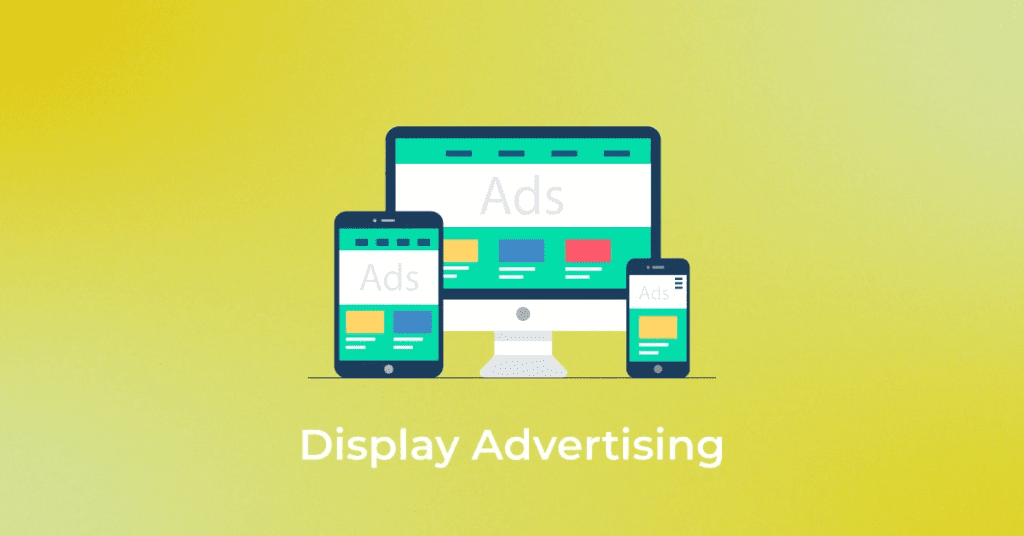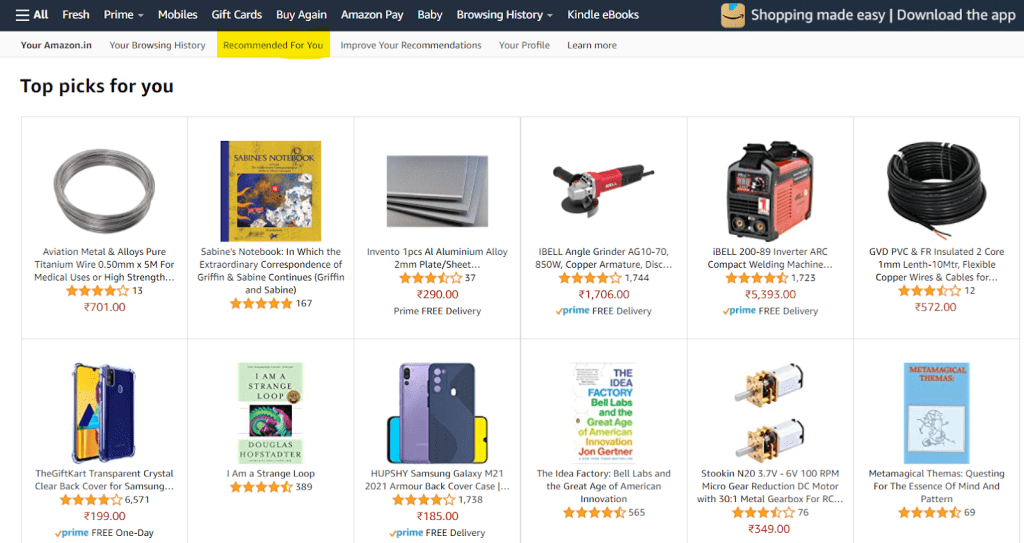Key Takeaways
- Visual Impact and Precision Targeting: Discover how compelling visuals combined with precise demographic, behavioral, and contextual targeting elevate the effectiveness of display advertising campaigns.
- Publisher-Advertiser Synergy: Uncover the symbiotic relationship between advertisers and publishers, exploring strategic ad placements, real-time bidding, and monetization tactics that maximize exposure and revenue.
- Challenges Turned Opportunities: Navigate through challenges like ad blockers and banner blindness with strategic insights, transforming obstacles into opportunities for innovation and growth in the ever-evolving landscape of display advertising.
In the dynamic realm of digital marketing, where innovation is the driving force behind reaching target audiences, display advertising stands out as a powerful and versatile strategy.
As businesses navigate the intricate landscape of online promotion, understanding the intricacies of display advertising becomes paramount.
In this comprehensive guide, we delve into the core of display advertising, unraveling its essence and uncovering the mechanisms that make it a pivotal component of modern marketing strategies.

Defining Display Advertising: A Beacon in the Digital Landscape
At its essence, display advertising is a visual, online form of promotion that utilizes images, graphics, and multimedia elements to convey a message to the intended audience.
It is a dynamic and visually compelling approach to capturing attention, creating brand awareness, and ultimately driving user engagement.
In an era where attention spans are fleeting and competition for consumer attention is fierce, display advertising emerges as a beacon, offering marketers a canvas to paint vivid brand narratives.
The Crucial Role of Display Advertising in Digital Marketing
Before we embark on the journey of unraveling the intricacies of how display advertising works, it’s crucial to acknowledge its pivotal role in the broader spectrum of digital marketing.
Display advertising is not just about showcasing visually appealing content; it’s a strategic move to establish a brand presence, connect with specific audience segments, and ultimately drive conversions.
In a world saturated with content, where consumers are constantly bombarded with information, display advertising provides a means to cut through the noise and make a lasting impression.
Navigating the Landscape: Understanding Key Components of Display Advertising
To truly grasp the mechanics of display advertising, it’s imperative to familiarize ourselves with its fundamental building blocks.
From the diverse array of ad formats, including banner ads, video ads, and rich media ads, to the intricate web of targeting options such as demographic, behavioral, and contextual targeting – each element plays a crucial role in shaping the success of a display advertising campaign.
These components form the backbone of a well-crafted strategy, allowing advertisers to tailor their messages with precision and connect with audiences on a deeper level.
As we embark on this exploration, we’ll not only uncover the nuts and bolts of display advertising but also shed light on the nuanced strategies employed by advertisers to maximize its impact.
From the inception of a campaign to the final interaction with a user, every facet of display advertising is a carefully orchestrated dance of creativity, data, and strategy.
Join us on this deep dive into the world of display advertising, where we’ll unravel its workings, explore its benefits and challenges, and equip you with the knowledge to navigate this ever-evolving landscape.
Whether you’re a seasoned marketer looking to refine your approach or a newcomer eager to grasp the fundamentals, this guide is your roadmap to mastering the art and science of display advertising.
Let’s embark on this enlightening journey together and discover how display advertising transforms digital marketing landscapes.
ChatGPT can make mistakes. Consider checking important information.
But, before we venture further, we like to share who we are and what we do.
About AppLabx
From developing a solid marketing plan to creating compelling content, optimizing for search engines, leveraging social media, and utilizing paid advertising, AppLabx offers a comprehensive suite of digital marketing services designed to drive growth and profitability for your business.
AppLabx is well known for helping companies and startups use display advertising to drive web traffic to their websites and web apps.
At AppLabx, we understand that no two businesses are alike. That’s why we take a personalized approach to every project, working closely with our clients to understand their unique needs and goals, and developing customized strategies to help them achieve success.
If you need a digital consultation, then send in an inquiry here.
What is Display Advertising and How it Works
- Key Components of Display Advertising
- How Display Advertising Works
- Benefits of Display Advertising
- Challenges in Display Advertising
- Best Practices for Effective Display Advertising
1. Key Components of Display Advertising
In the ever-evolving landscape of digital advertising, understanding the key components of display advertising is crucial for creating impactful campaigns that resonate with target audiences.
From diverse ad formats to intricate targeting options, each element plays a pivotal role in shaping the success of a display advertising strategy.

Ad Formats
Banner Ads
- Definition: Banner ads are the most traditional form of display advertising, consisting of static or animated images typically placed at the top, bottom, or sides of a webpage.
- Best Practices: Design eye-catching visuals, include a compelling call-to-action, and ensure responsiveness for various screen sizes.

Video Ads
- Definition: Video ads bring dynamic content to display advertising, leveraging moving images and audio to convey messages.
- Example: Nike’s “Dream Crazy” campaign featuring Colin Kaepernick saw a significant increase in online sales.

- Best Practices: Keep videos concise, ensure quick engagement, and optimize for mobile devices.
Rich Media Ads
- Definition: Rich media ads go beyond static visuals, incorporating interactive elements like video, audio, and animations.
- Example: Netflix utilized rich media ads to promote its shows.

- Best Practices: Prioritize user engagement, create immersive experiences, and ensure compatibility with different browsers.
Targeting Options
Demographic Targeting
- Definition: Demographic targeting involves tailoring ads based on demographic factors such as age, gender, income, and education.
- Example: Facebook Ads allow advertisers to precisely target users based on demographics, resulting in more relevant ad delivery.
- Benefits: Increases relevancy, reduces ad spend wastage, and enhances the likelihood of connecting with the target audience.
Behavioral Targeting
- Definition: Behavioral targeting analyzes users’ online behaviour to deliver ads aligned with their interests and preferences.
- Example: Amazon’s product recommendations and personalized ads are prime examples of effective behavioural targeting.
- Advantages: Improves ad relevance, enhances user experience, and boosts the chances of conversions.

Contextual Targeting
- Definition: Contextual targeting involves displaying ads based on the content of the webpage, ensuring alignment between the ad and the context of the page.
- Example: Google AdSense uses contextual targeting to match ads with relevant website content, enhancing user engagement.
- Merits: Increases ad relevance, boosts user engagement, and aligns ads with the user’s immediate interests.
Ad Placement Strategies
Above-the-Fold vs. Below-the-Fold
- Definition: Above-the-fold refers to the portion of a webpage visible without scrolling, while below-the-fold is the content visible after scrolling.
- Above the page fold are 68 per cent more viewable, emphasizing the importance of strategic ad placement.
- Recommendations: Consider the nature of the campaign; for immediate impact, above-the-fold is crucial, but below-the-fold can still capture engaged users.
In-App vs. Web Display Advertising
- Definition: In-app display ads appear within mobile applications, while web display ads are on websites.
- Considerations: Tailor campaigns based on the audience’s online behaviour; if they spend more time on apps, prioritize in-app display advertising.
Ad Creative and Design Considerations
Responsive Design
- Definition: Responsive design ensures that ad creatives adapt to different screen sizes and devices.
- In the first quarter of 2023, mobile devices (excluding tablets) generated 58.33 per cent of global website traffic, underlining the importance of responsive design.
- Importance: Enhances user experience, reduces bounce rates, and broadens the reach of display ads.
Dynamic Creative Optimization (DCO)
- Definition: DCO involves automatically optimizing ad creatives based on user data and behaviour.
- Benefits: Maximizes relevancy, increases engagement, and drives higher conversion rates.
2. How Display Advertising Works
In the digital marketing landscape, understanding how display advertising works is pivotal for businesses aiming to elevate their online presence and connect with their target audience.
This comprehensive exploration will unravel the intricate processes from an advertiser’s and publisher’s perspective, shedding light on the journey of a display ad from conception to engagement.

Advertiser’s Perspective
Setting Campaign Objectives
- Strategic Planning:
- Before launching a display advertising campaign, advertisers must define clear and measurable objectives. These may include brand awareness, lead generation, or direct sales.
- Data-Driven Decision-Making:
- Utilize market research and analytics to understand the target audience, enabling the creation of tailored campaigns.
- Data-driven marketing can lead to a 20% increase in marketing ROI.
Designing Creative Assets
- Compelling Visuals:
- Craft visually appealing and relevant creatives that align with campaign objectives and resonate with the target audience.
- Example: Apple’s minimalist and visually striking product displays have been consistently effective in capturing consumer attention.
- Multimedia Elements:
- Incorporate multimedia elements such as images, videos, and interactive content to enhance engagement.
- Video ads’ effectiveness is evident with a 1.84% CTR and influence on 90% of consumer purchases.
Choosing Targeting Parameters
- Demographic Targeting:
- Select specific demographic parameters (age, gender, location) to ensure ads reach the intended audience.
- Demographic targeting can be a great way to identify the right people to target.
- Behavioural Targeting:
- Leverage user behaviour data to tailor ads based on interests, online activities, and past interactions.
- Behavioural targeting has been shown to increase conversions by up to 30%.
- Contextual Targeting:
- Align ads with the context of the content users are viewing, enhancing relevance.
- Example: If a user is reading about travel destinations, displaying ads for travel accessories becomes more impactful.

Publisher’s Perspective
Allocating Ad Spaces
- Strategic Placement:
- Publishers strategically allocate ad spaces on their websites, considering factors like visibility, user experience, and relevance to their audience.
- Ad Inventory Management:
- Manage ad inventory efficiently, optimizing for maximum revenue while maintaining a positive user experience.
- Example: Google Ad Manager helps publishers effectively manage their ad inventory, balancing revenue and user satisfaction.

Integrating Ad Tags
- Ad Tag Implementation:
- Publishers integrate ad tags into their website’s code, allowing for the dynamic display of ads.
- Responsive search ads convert an average of 7% higher than the older format of search ads.
- Real-Time Bidding (RTB):
- Embrace RTB to automate the buying and selling of ad impressions, optimizing the ad-serving process.
Monetizing Display Inventory
- Cost Models:
- Choose a cost model that aligns with business goals, whether it’s cost per mille (CPM), cost per click (CPC), or cost per acquisition (CPA).
- Example: E-commerce sites often prefer CPC, ensuring payment only when users click through to their websites.
- Ad Revenue Optimization:
- Employ techniques like header bidding and yield management to maximize ad revenue.
3. Benefits of Display Advertising
Display advertising offers a multitude of benefits for businesses seeking to enhance their online presence, engage target audiences, and drive meaningful results.
From brand visibility to measurable analytics, this section explores the various advantages that make display advertising an indispensable component of modern marketing strategies.
Brand Visibility and Recognition
Visual Impact:
- Display ads leverage visual elements, capturing attention and creating a lasting impression on viewers.
- Visual content is shared 40 times more than other types of content.
Consistent Branding:
- Display advertising allows for consistent branding by using logos, color schemes, and messaging across different ad formats.
- Example: McDonald’s consistent use of the golden arches and red color scheme reinforces brand recognition globally.

Wider Reach:
- Display ads have the potential to reach a vast audience across websites, social media platforms, and apps.
- Display ads have proven to be more efficient for elevating brand visibility.
Increased Website Traffic
Click-Through Rates (CTR):
- Engaging display ads with compelling visuals and CTAs can drive users to click through to the advertiser’s website.
- The average click-through rate in Google Ads across all industries is 3.17% for search and 0.46% for display.
Retargeting Strategies:
- Display advertising enables retargeting, showing ads to users who have previously visited a website, increasing the likelihood of conversion.
- The average click-through rate for retargeting display ads is 0.7%, which is 10 times higher than that of regular display ads at 0.07%.
Direct Response Campaigns:
- Display ads can be optimized for direct response, guiding users to specific landing pages, or encouraging immediate actions.
- Example: Booking.com effectively uses display advertising to drive users to book accommodations with compelling visuals and exclusive offers.
Targeted Audience Engagement
Demographic Targeting:
Advertisers can precisely target their desired audience based on demographics, ensuring the right message reaches the right people.
Behavioural Targeting:
- Understanding user behaviour allows for the delivery of ads aligned with individual interests, preferences, and online activities.
- Example: Amazon’s recommendation system showcases the effectiveness of behavioural targeting, providing users with personalized product suggestions.

Contextual Relevance:
Display ads can be contextually targeted, appearing on websites with content relevant to the advertised product or service.
Measurable Results and Analytics
Performance Metrics:
Display advertising platforms provide robust analytics, allowing advertisers to measure performance through metrics like impressions, clicks, and conversions.
A/B Testing for Optimization:
- Advertisers can conduct A/B testing to optimize ad creatives, targeting parameters, and messaging for improved performance.
- Example: Google Ads allows advertisers to run multiple variations of ads simultaneously, facilitating A/B testing for optimal results.

Attribution Models:
Display advertising facilitates the use of attribution models, helping marketers understand the customer journey and the impact of various touchpoints.
4. Challenges in Display Advertising
While display advertising offers a myriad of benefits, navigating the landscape is not without its hurdles.
Advertisers and marketers encounter several challenges that require strategic solutions and adaptability to ensure the effectiveness of their campaigns.
This section explores the prominent challenges in display advertising, delving into industry complexities and providing insights on overcoming these obstacles.

Ad Blocking
Rise of Ad Blocker Usage:
- With the surge in online advertising, users increasingly turn to ad blockers to avoid intrusive or irrelevant display ads.
- 42.7% of internet users worldwide (16-64 years old) use ad-blocking tools at least once a month.
Impact on Revenue:
Ad blocking poses a significant threat to the revenue streams of publishers and advertisers, limiting the reach of display ads.
Mitigating Strategies:
- Advertisers must focus on creating non-intrusive, relevant ads to discourage users from resorting to ad blockers.
- Implementing native advertising or sponsored content that aligns seamlessly with the user experience can help overcome ad-blocking challenges.
Banner Blindness
User Ignorance of Display Ads:
- Users, accustomed to the constant presence of display ads, develop “banner blindness,” ignoring or overlooking these ads.
- The average time that people actually spend looking at a desktop display ad is 1.3 seconds.
Reduced Click-Through Rates (CTR):
Banner blindness contributes to lower CTRs, impacting the overall performance of display advertising campaigns.
Strategies to Combat Banner Blindness:
- Employ dynamic and engaging creatives that stand out from typical ad designs.
- Utilize rich media formats, interactive elements, and compelling visuals to capture user attention.
Viewability Concerns
Ad Visibility Issues:
- Viewability refers to the extent to which display ads are actually seen by users. Ads placed below the fold or those not fully loaded may suffer from poor viewability.
- In the first half of 2022, the global viewability rate of mobile web display ads stood at 66.9 per cent, emphasizing the need for improvement.
Impacts on Campaign Effectiveness:
- Poor viewability affects the effectiveness of display advertising, as ads that go unnoticed fail to deliver the desired impact.
- Example: If an ad is not fully loaded when a user visits a webpage, it contributes to lower viewability metrics.
Enhancing Viewability Strategies:
- Optimize ad placements to ensure they are above the fold for increased visibility.
- Leverage technologies like lazy loading and asynchronous ad tags to enhance viewability.
5. Best Practices for Effective Display Advertising
Creating impactful display advertising campaigns requires a strategic approach that considers various factors, from creative design to targeting strategies.
By adopting best practices, advertisers can maximize their campaign’s reach, engagement, and overall effectiveness.

Compelling Creative Design
Eye-Catching Visuals:
Craft visually appealing ads that capture attention and communicate the message effectively.
Clear Call-to-Action (CTA):
- Include a compelling CTA that prompts users to take the desired action, whether it’s making a purchase, signing up, or clicking for more information.
- Example: Spotify’s display ads often feature a clear CTA to entice users to subscribe to their premium service.
Responsive Design:
- Ensure ad creatives are responsive and compatible with various devices, including smartphones, tablets, and desktops.
- In the first quarter of 2023, mobile devices (excluding tablets) generated 58.33 per cent of global website traffic.
Strategic Targeting Strategies
Demographic Targeting:
- Utilize demographic data to target specific audience segments based on factors like age, gender, income, and education.
- Example: Facebook Ads allows advertisers to precisely target users based on demographics, enhancing ad relevance.
Behavioural Targeting:
Leverage user behaviour data to deliver ads aligned with individual interests, preferences, and online activities.
Contextual Targeting:
Align ads with the context of the content users are viewing, ensuring relevance to the immediate interests of the audience.
Optimized Ad Placements
Above-the-Fold Positioning:
Example: Google Display Network prioritizes above-the-fold ad placements for maximum impact.
In-App Advertising:
Consider in-app advertising to reach users spending significant time on mobile applications.
Balanced Ad Frequency:
Avoid overexposure by carefully managing ad frequency to prevent audience fatigue.
Continuous A/B Testing
Varied Ad Creatives:
- Conduct A/B testing with different ad creatives to identify which elements resonate best with the target audience.
- Example: Google Ads allows advertisers to run multiple variations of ads simultaneously for effective A/B testing.
Targeting Parameters:
Test and optimize targeting parameters such as demographics, interests, and behaviours to improve campaign performance.
Landing Page Optimization:
A/B test landing pages linked from display ads to enhance the user experience and boost conversion rates.
Adaptability and Data Utilization
Real-Time Adjustments:
Monitor campaign performance in real-time and make adjustments based on data insights to maximize results.
Utilize Customer Data Platforms (CDPs):
- Implement CDPs to centralize and utilize customer data for more personalized and effective ad targeting.
- Example: Salesforce’s CDP helps businesses unify customer data for targeted marketing efforts.
Integration of AI and Machine Learning:
Embrace AI and machine learning technologies to automate targeting, creative optimization, and bidding strategies.
Conclusion
In delving into the expansive universe of display advertising, our journey has been marked by a comprehensive exploration of the fundamental question: What is display advertising and how does it work?
Each facet of this digital marketing phenomenon, from its inception to the intricate mechanisms that drive its success, has been laid bare for a thorough understanding.
The Essence of Display Advertising
At its core, display advertising represents a dynamic form of digital marketing that leverages visual elements to convey messages and engage audiences.
Through a variety of creative formats, businesses can showcase their products, services, or brand narratives on diverse online platforms, seeking to captivate the attention of their target audience.
The Advertiser’s Canvas: Crafting Impactful Campaigns
Our journey was initiated with a closer look at the advertiser’s perspective—a realm marked by strategic planning, creative ingenuity, and precise targeting.
Setting clear campaign objectives became the cornerstone, guiding advertisers to define their goals, whether it be brand awareness, lead generation, or direct sales.
The journey continued with a meticulous examination of targeting strategies, where demographic, behavioural, and contextual approaches paved the way for precise audience engagement.
The Publisher’s Realm: Maximizing Exposure and Revenue
Transitioning to the publisher’s perspective, we explored the strategic allocation of ad spaces, the integration of ad tags, and the art of monetizing display inventory.
Above-the-fold positioning, in-app advertising, and considerations for ad frequency became pivotal elements in the quest for maximizing exposure and revenue.
Real-time bidding (RTB) and the management of ad inventory through platforms like Google Ad Manager unveiled the sophisticated side of display advertising from the publisher’s lens.
These elements collectively contribute to the symbiotic relationship between advertisers and publishers in the digital ecosystem.
Challenges Amidst Opportunities
As with any digital endeavour, challenges accompany the opportunities. Ad blocking, banner blindness, and viewability concerns pose hurdles that require adept navigation.
However, these challenges, when approached strategically, can metamorphose into opportunities for innovation and growth.
Best Practices: Navigating the Digital Landscape
Armed with insights into the challenges, we pivoted towards best practices—guiding principles that empower advertisers and publishers to navigate the digital landscape effectively.
From compelling creative design and strategic targeting strategies to optimized ad placements, continuous A/B testing, and the integration of AI, these best practices form the bedrock of successful display advertising campaigns.
In a landscape where technology evolves and consumer behaviours transform, display advertising remains a pulsating force. It serves as a conduit for businesses to not only showcase their offerings but to weave narratives that resonate with diverse audiences.
Embracing these insights and best practices is not just a strategy—it’s a commitment to staying ahead in the digital marketing game and creating lasting impressions in the minds of a diverse and dynamic audience.
In the ever-evolving digital marketing landscape, display advertising stands as a dynamic force, offering businesses the means to elevate their brand, engage audiences, and achieve measurable results.
As technology continues to advance, and consumer behaviours evolve, the world of display advertising will undoubtedly continue to shape the digital marketing narrative, providing new avenues for innovation and connection in the online sphere.
Embracing these insights and best practices is not just a strategy—it’s a commitment to staying ahead in the digital marketing game and creating lasting impressions in the minds of a diverse and dynamic audience.
If you are looking for a top-class digital marketer, then book a free consultation slot here.
If you find this article useful, why not share it with your friends and business partners, and also leave a nice comment below?
We, at the AppLabx Research Team, strive to bring the latest and most meaningful data, guides, and statistics to your doorstep.
To get access to top-quality guides, click over to the AppLabx Blog.
People also ask
How to do a display advertisement?
To create a compelling display advertisement:
- Define objectives: Identify goals like brand awareness or conversions.
- Craft visuals: Design eye-catching images or videos.
- Target audience: Utilize demographic and behavioural targeting.
- Choose platforms: Opt for websites, apps, or social media.
- Set budget: Determine ad spend and bidding strategy.
- Monitor and optimize: Track performance and adjust based on analytics for maximum impact.
How does display ad targeting work?
Display ad targeting leverages data to reach specific audiences. Demographic factors, user behaviour, and interests inform targeting parameters. Contextual relevance ensures ads align with content. Real-time bidding (RTB) automates ad buying, optimizing impressions for effective audience engagement.
What is the difference between banner ads and display ads?
Banner ads are a specific type of display ad. Display ads encompass various formats like banners, videos, and interactive content. While banner ads are static or animated images, display ads encompass a broader range of visually engaging elements across digital platforms for effective audience engagement.




































